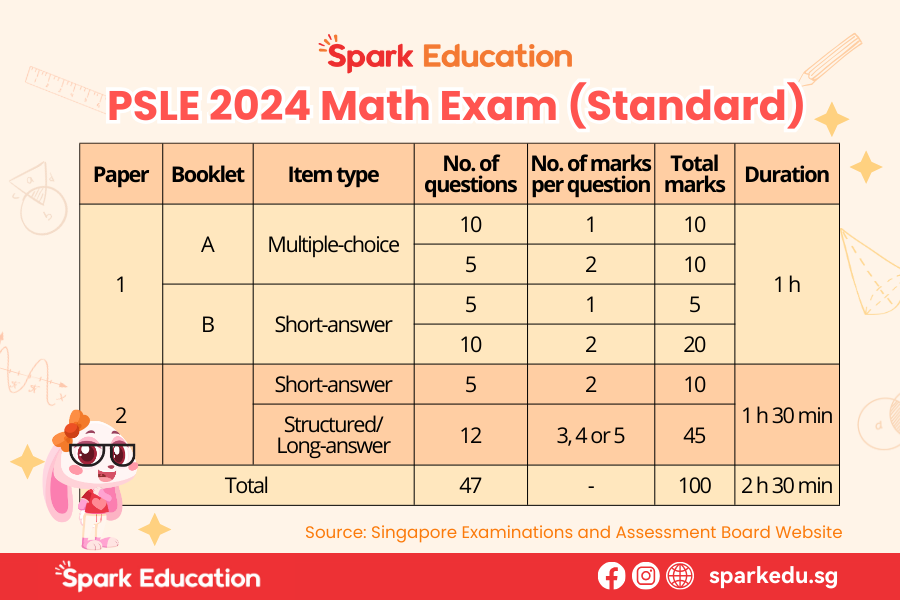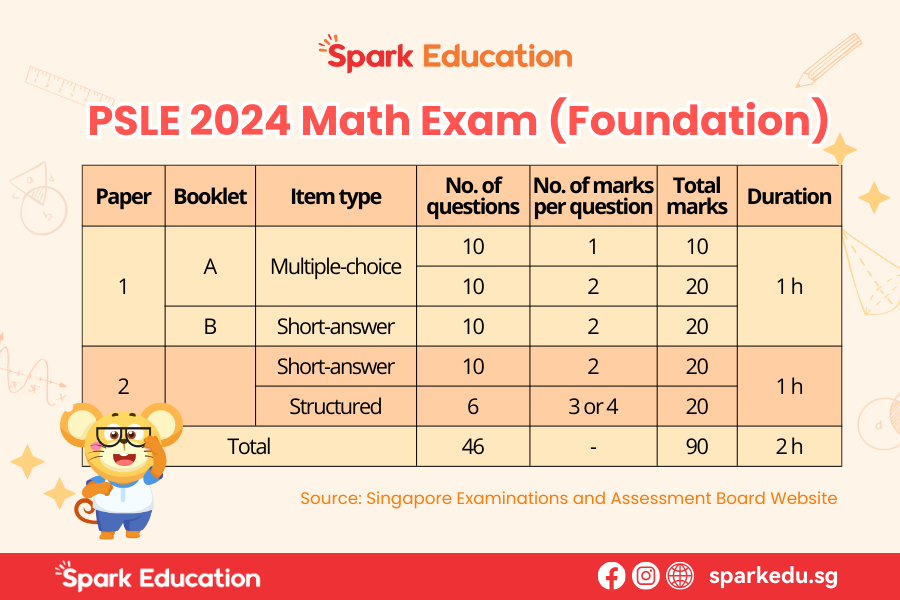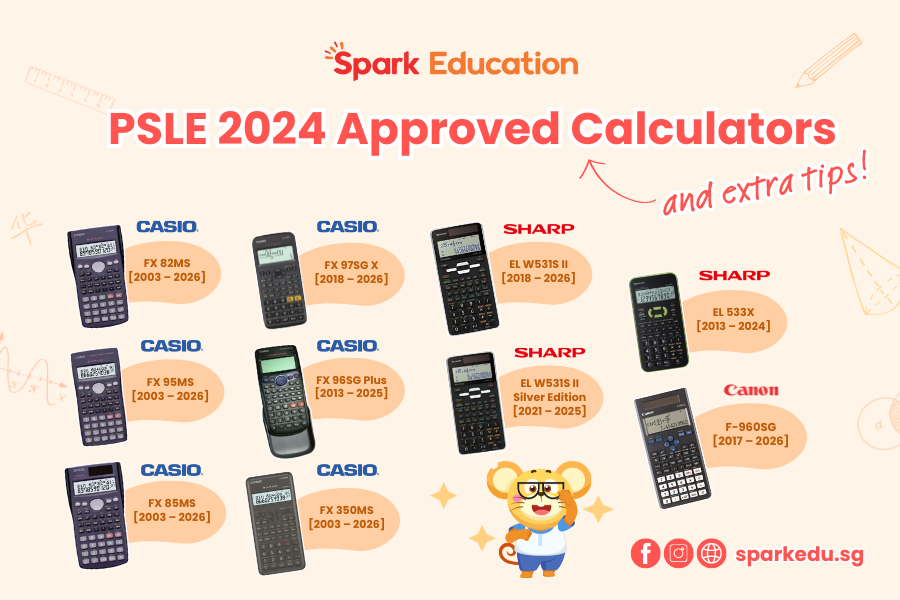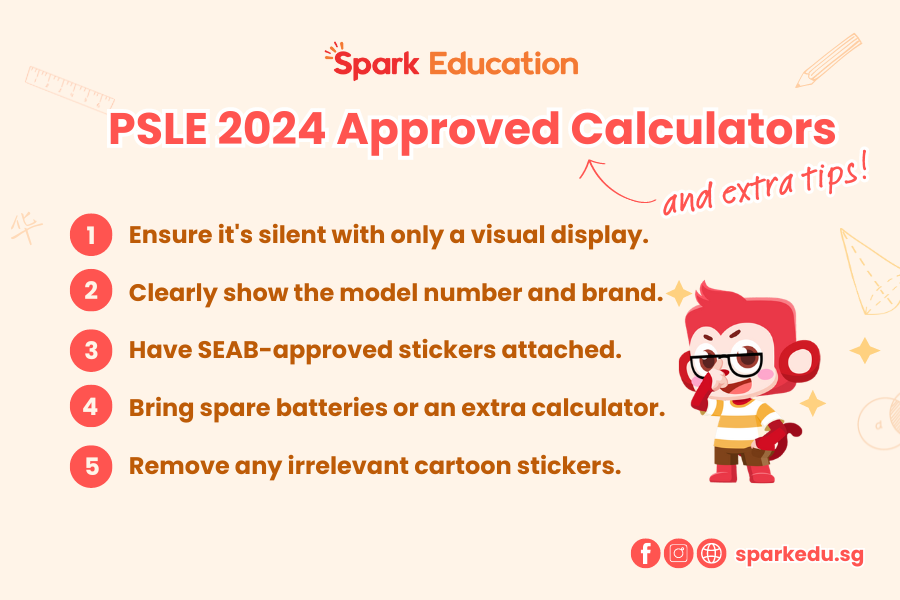Imagine yourself confidently walking out of the PSLE Math exam, knowing you’ve given it your best. With the right preparation and mindset, you are just a step from approaching this exam with confidence. In this post, we’ll share effective tips to help you prepare for PSLE Math and shine on the exam day.

Related articles: PSLE 2024 Timetable, PSLE Math Exam Format Explained, New MOE Math Syllabus (P4-P6), SEAB-Approved Calculators
Week Before the Exam
1. Review Key Concepts
Focus on Core Topics
By now, you should have already identified most of the key concepts that frequently appeared in past PSLE papers. Go through your Spark Math notes, textbooks, and practice papers to reinforce your understanding of key concepts. Refer to your Spark Math P6 PSLE Webinar notes for specific details and guidance on common pitfalls to avoid.
Keep your study sessions short—about 30 to 45 minutes—allowing for breaks in between to maintain focus and retention. If you’re unsure about a concept, ask your teacher or tutor for clarification.
Practice Problem-Solving
Work on a variety of problems related to these core topics intensively helps you see the connections and core of these topics. Word problems are especially beneficial, as they help you improve your conceptual understanding and application skills.
Instead of just relying on answer keys, use Spark Math’s UDSC method—Understand, Decide, Solve, and Check. This structured approach ensures you thoroughly comprehend the question and refine your problem-solving process. Developing a clearer thought process will serve you well in the exam and beyond.
2. Timed Practice Tests
Familiarize Yourself with the Exam Format
Understand the structure of the PSLE paper, including the number of questions and types of questions for each section. Check out the PSLE Math Exam Paper Format Explained for more insights.
During the exam, allocate your time based on the difficulty and weight of each question. Spend more time on questions that are challenging or unfamiliar to you.


Simulate Exam Conditions
Take timed practice tests to get accustomed to the exam format and time constraints. Try to complete these tests within the allotted time to build endurance and reduce anxiety.
You can also set a timer to develop a sense of urgency when practicing individual questions. If you run out of time for a question, don’t panic. Move on to the next one and come back to it if you have time.
3. Common Mistakes and How to Avoid Them
After each practice test, review your mistakes. Understanding where you went wrong is crucial for improvement. Refer to your Spark Math P6 PSLE Webinar notes for specific details and guidance on common pitfalls to avoid:
| Careless Errors | Double-check your answers to avoid careless mistakes, such as miscalculations or copying errors. For example, make sure you’ve correctly added, subtracted, multiplied, or divided numbers. |
| Misreading Questions | Read each question carefully and make sure you understand what is being asked. Avoid jumping to conclusions. |
| Not Showing Your Work | Show your work clearly to earn partial credit even if your final answer is incorrect. This also demonstrates your understanding of the problem-solving process. |
4. Positive Mindset and Well-Being
Remember, you’ve put in the hard work and preparation. Trust in your abilities and approach the exam with confidence. Practice deep breathing exercises to manage anxiety. Take a few deep breaths before starting the exam or whenever you feel overwhelmed.
Ensure you’re well-rested before the exam. Aim for 7-8 hours of sleep each night leading up to test day to stay alert and focused. Maintain a healthy diet and stay hydrated to optimize your brain function.
Day Before the Exam
1. Review Formulas and Concepts
Quickly review important formulas and concepts. Refer to your Spark Math PSLE Cheat Sheets. Here are some key math concepts for the PSLE Math Exam revision.
| Math Topic | Key Concepts | |
| 1 | Numbers and Operations | Place Value Operations with Whole Numbers Operations with Decimals Mixed Numbers Ratios and Proportions Percentage Mental Math |
| 2 | Measurement | Units of Measurement Conversions Perimeter and Area Volume Time Rates |
| 3 | Geometry | 2D and 3D Shapes Angles (e.g., acute, right, obtuse, straight) Properties of Shapes (e.g., sides, angles, symmetry) Transformations (e.g., translations, rotations, reflections) Coordinates |
| 4 | Data Analysis | Data Representation (e.g., bar graphs, pie charts) Data Analysis Problem-solving |
2. Pack Your Essentials
Packing your bag the night before can help reduce stress and allow you to focus on your exam performance.
- SEAB-approved calculator: Make sure your calculator is SEAB-approved and that you have a spare battery. Familiarize yourself with its functions to save time during the exam.
- Stationery: Bring essential items like pencils, pens, an eraser, and a ruler. Consider packing extra pencils in case one breaks or runs out of lead. Highlighters can also be useful for marking important parts of questions.
- Water bottle and a light snack: Staying hydrated is vital for maintaining focus. Pack a water bottle and a healthy snack—for example, a granola bar or some fruits—to keep your energy up.


On the Exam Day
Arrive Early
Plan to arrive at the exam venue early. This gives you time to settle in and mentally prepare, reducing stress before the test begins.
Read Instructions Carefully
Take your time to read all instructions during the exam. Fully understanding what is being asked is key to answering correctly.
Manage Your Time Wisely
Keep an eye on the clock and allocate your time based on the difficulty of each question. If you get stuck, it’s often best to move on and return to challenging questions later.
Check Your Work
After completing the exam, take a few minutes to review your answers and make any necessary corrections.
Remember, success in the PSLE exam comes down to preparation, practice, and a positive attitude. By following these tips, you can boost your confidence and increase your chances of achieving your desired score. Good luck—you’ve got this!
Spark Math by Spark Education is a MOE-aligned online math program designed to make learning math engaging and effective. With interactive lessons, personalized learning pathways, and experienced teachers, Spark Math helps students of all ages build a strong foundation in math and develop a lifelong love for the subject. Sign up for a FREE online trial class to see the difference today.




